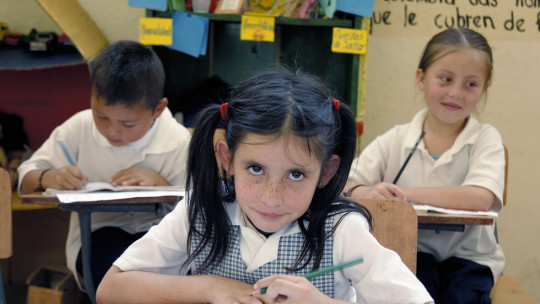
In educational psychology, there are many theories that try to explain how students learn. Here we will learn about Walberg’s educational productivity model which attempts to determine what factors influence the student’s academic performance or achievement, and in what way.
According to the model, there are 4 fundamental variables in the learning process that influence the final performance of a student. Let’s find out what they are and what each of them consists of.
Walberg’s educational productivity model
Walberg’s educational productivity model was developed in 1981 and perfected in 1984. It is based on the theory of cognitive learning that understands the student learning process as a production process
It uses various institutional, academic, demographic and/or economic factors as inputs, and as output the student’s academic performance, or passing a certain subject.
For Walberg, Educational productivity is the degree to which learning increases while costs are minimized
Model components
There are 4 central components of Walberg’s educational productivity model, which interact with each other to explain student performance. Thus, these 4 central elements combine and influence each other to determine the student’s final performance. If the student has favorable aptitudes and an adequate and stimulating environment, learning can be positive in terms of attitudes, behaviors and knowledge.
1. Student aptitude
Student aptitude is one of the central factors of the model. This attitude is made up of 3 basic components, which are:
1.1. The capacity or “amount” of aptitude
Includes cognition and knowledge It would be the student’s previous performance.
1.2. The motivation
It involves wanting to do something. It is also called self-concept, and it is defined by personality tests; I would be the student’s willingness to intensely persevere in learning tasks
1.3. The level of development
It consists of the development, age or stage of maturation of the student to incorporate certain learning
On the other hand, within the student variables, the cognitive ones will be very relevant to previous performance. In this line, Walberg highlights the aptitude the student’s IQ as a variable closely related to performance
2. Environment where you learn
The environment where the student learns will influence learning. We can differentiate different types of environment: the home (closer and more intimate), that of friends, that of the media (for example television), that of classmates, that of the class climate and that of school, etc. . These last two will be the most important when it comes to paying attention to them.
Walberg stands out from the environment the completion of homework (which must be evaluated), the atmosphere or morale of the class and home as variables that especially influence performance.
3. Learning
It consists of acquiring new knowledge, and It can be of different types: affective, behavioral and cognitive learning
Learning will be greater with a cooperative environment aimed at achieving goals. Besides, an environment that provides stimulation and a teacher with good teaching techniques They will also be variables that will drive learning.
4. Teaching
This will vary in terms of quantity and quality (the greater the quantity and quality, the more likely the student’s performance will be higher).
Quantity is the time that students are engaged in learning, and quality is typical of the teaching experience, which includes aspects of the method (psychological) and curricular (content).
Well-planned and organized teaching will promote learning and performance, as well as the existence of tutoring and feedback from teachers. On the other hand, it will also be positive if the student dedicates effort and enough time to the task.
The influence of each component
According to Walberg’s educational productivity model, in terms of importance, the most important element will be the climate of the class (within the environment), followed by the ability of the student and the quality of teaching.
On the other hand, we must not forget other elements that also play an important role in performance (although less), such as the home, the amount of teaching and the student’s motivation.
Models after Walberg
After the publication of Walberg’s educational productivity model, other authors (Fraser, Walberg, Welch and Hattie) in 1987 attempted to determine the influence and weight of the different components of the model on the student’s final performance.
This is how the Hattie model of school learning originates, which includes as some of the determining variables for performance: social factors, school, teacher and teaching. In turn, the model breaks down these variables into more specific components.








